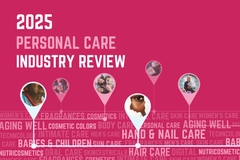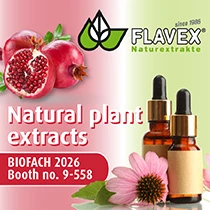Canada bans cosmetic ingredients in Hotlist update amid health concerns

29 May 2024 --- Health Canada updates the Cosmetic Ingredient Hotlist for prohibited and restricted ingredients. The department adds basic green 4, benzophenone, p-chloro-m-cresol and solvent violet 13 to the list while amending certain existing ingredients.
The last Hotlist update took place in 2022, with the addition of ethylhexyl ethylhexanoate and azelaic acid and its salts.
Additional amendments concern secondary dialkanolamines, alpha-hydroxy acids, hydroquinone, p-hydroxyanisole and talc.
Prompted by health concerns
The Government of Canada’s Chemicals Management Plan assessed the ingredients added to the restricted list.
Basic green 4 (malachite green and its salts) is prohibited due to “potential developmental effects,” and benzophenone is under restriction due to “adverse maternal effects such as decreased body weight.”
P-chloro-m-cresol is restricted as it can “impact the adrenal organs” — the glands above the kidneys — while solvent violet 13 is limited due to “health concerns.”
New amendments
The entry of dialkanolamines was changed to include secondary alkyl- and alkanolamines and their salts for clarity. They act as buffering agents, emulsifiers or surfactants and “as precursors of carcinogenic nitrosamines.”
 The last Hotlist update took place in 2022, with the addition of ethylhexyl ethylhexanoate and azelaic acid and its salts.The entry for alpha-hydroxy acids was changed to make it clear that polyhydroxy acids, bionic acids and salts that have alpha-hydroxyl groups are included. “Additionally, the maximum permitted concentration for the consumer use category was increased from 10% to 18%,” says Health Canada.
The last Hotlist update took place in 2022, with the addition of ethylhexyl ethylhexanoate and azelaic acid and its salts.The entry for alpha-hydroxy acids was changed to make it clear that polyhydroxy acids, bionic acids and salts that have alpha-hydroxyl groups are included. “Additionally, the maximum permitted concentration for the consumer use category was increased from 10% to 18%,” says Health Canada.
The consumer use category was expanded based on a retrospective analysis of cosmetic products intended for professional use. Updated cautionary and warning statements and new product-specific usage guidelines are the other changes for alpha-hydroxy acids.
The hydroquinone permit was expanded to include products for consumer use, with a maximum concentration permit increase for these products. Other changes include a combined limit of p-hydroxyanisole and hydroquinone when used in nail products.
The talc entry was updated to “help reduce chronic inhalation exposure,” which Health Canada says could cause non-cancer lung effects such as inflammation or fibrosis. It adds, genital exposure to those with intact ovary/ovaries may result in ovarian cancer.
Personal Care Insights recently spoke to the department about the new rules for stricter cosmetic labeling for fragrance allergens following the EU’s suit.
By Venya Patel













